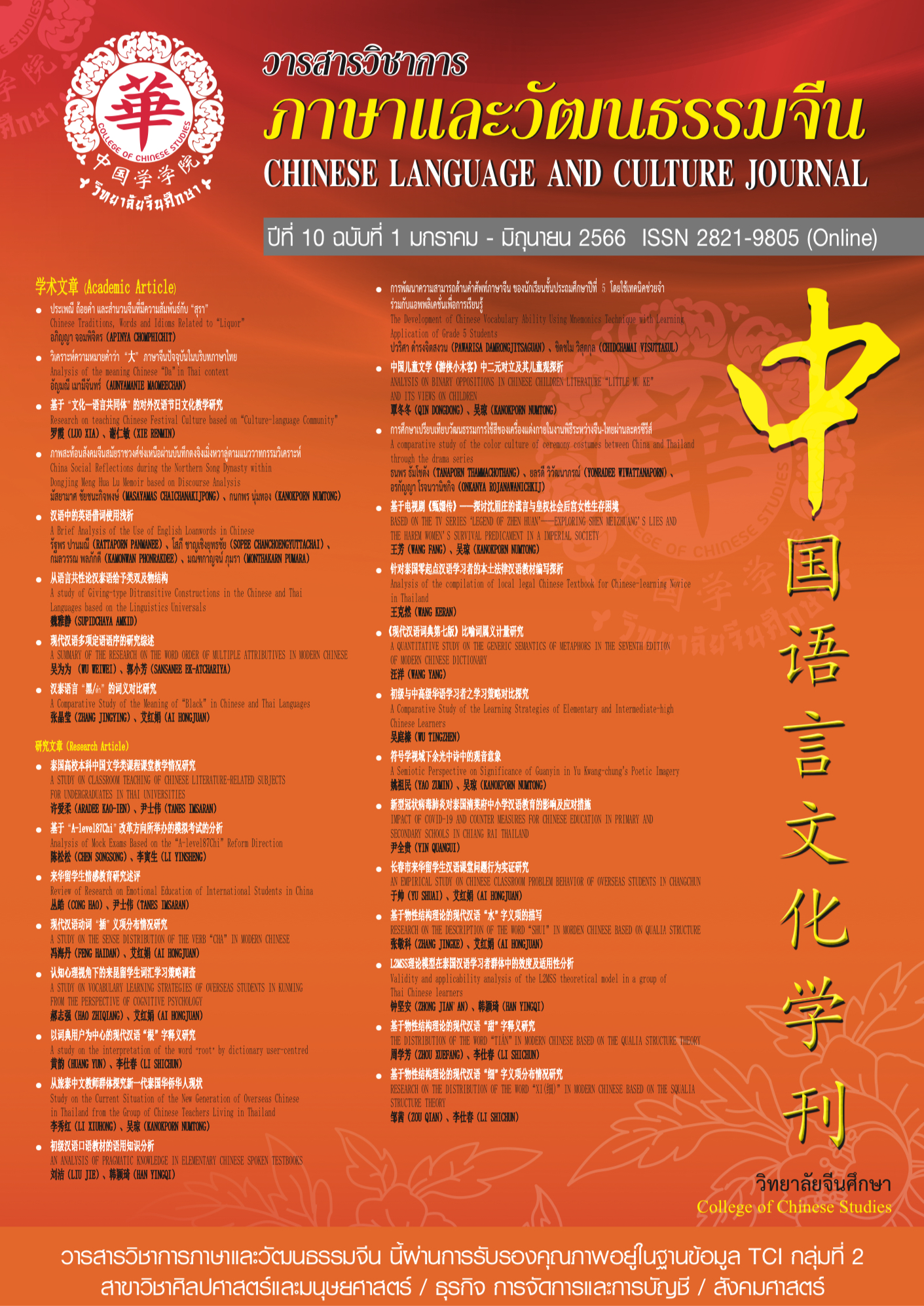THE DISTRIBUTION OF THE WORD “TIÁN” IN MODERN CHINESE BASED ON THE QUALIA STRUCTURE THEORY
Keywords:
corpus, qualia structure, semantic distributionAbstract
In this paper, by comparing the definition of "tián" in the commonly used Chinese dictionary and the corresponding word "sweet" in the English dictionary, it is found that the division of meanings in the English dictionary is far more precise than that in the Chinese dictionary. It can be seen that the Chinese dictionary may have missing meanings. Therefore, based on the CCL corpus, 10,000 corpora of the word " tián " were extracted, and the distribution of its meaning items was exhaustively analyzed on the basis of the corpus, and the interpretation of the word " tián " in modern Chinese was adjusted by using the physical property structure theory. After analysis, it was re-divided into ten meaning items and found that the two new meanings try to realize the completeness of meaning division, reflect the accuracy of meaning description, and provide some thoughts for lexicographers.
References
李芳棋、李仕春.现代汉语多义词“平”义项分布情况的描写与解释.[J].佳木斯大学社会科学学
报,2020,38(04):123-127
李芳棋、王成、李仕春.基于物性结构理论的现代汉语“直”义项分布研究.[J].黑龙江工业学院学
报(综合版),2021(04):146-150.
李强、袁毓林.生成词库理论和名词语义的结构描述与概念解释.[J].语言学论丛,2019,(01):263-
李仕春.基于语料库的现代汉语“黄”字义项分布研究(社会科学版).[J].中国海洋大学学
报,2016(05):103-109
林雪菡、李仕春.框架语义学视域下的多义词“坏”义项分布情况研究.[J].牡丹江大学学
报,2020,29(09):72-76
王恩旭、袁毓林.词义中物性角色的分布及其对词语释义的影响——以“颜色语素+名物语素”复合
词为例.[J].外国语(上海外国语大学学报),2018,41(02):31-41.
袁毓林.汉语名词物性结构的描写体系和运用案例. [J].当代语言学. 2014,16(01):31-48.
袁毓林.基于生成词库论和论元结构理论的语义知识体系研究.[J].中文信息学报,2013,27(06):
-30.
詹卫东、郭锐、谌贻荣.北京大学中国语言学研究中心CCL语料库.[online].
http://ccl.pku.edu.cn:8080/ccl_corpus
张念歆、宋作艳.汉语形名复合词的语义建构:基于物性结构与概念整合理论.[J].中文信息学报,
,29(06):38-45
张志毅、张庆云.理论词典学.[M]北京:商务印书馆,2015.
Pustejovsky J:The Generative Lexicon. [M]. Cam-bridge Massachusetts:The MIT Press. 1995.
Downloads
Published
How to Cite
Issue
Section
License
Copyright (c) 2023 Chinese Language and Culture Journal

This work is licensed under a Creative Commons Attribution-NonCommercial-NoDerivatives 4.0 International License.
บทความที่ได้รับการตีพิมพ์เป็นลิขสิทธิ์ของวารสารภาษาและวัฒนธรรมจีน มหาวิทยาลัยหัวเฉียวเฉลิมพระเกียรติ
บทความใน “วารสารวิชาการภาษาและวัฒนธรรมจีน” เป็นทรรศนะของผู้เขียนโดยเฉพาะ กองบรรณาธิการไม่มีส่วนในความคิดเห็นในข้อเขียนเหล่านั้น




